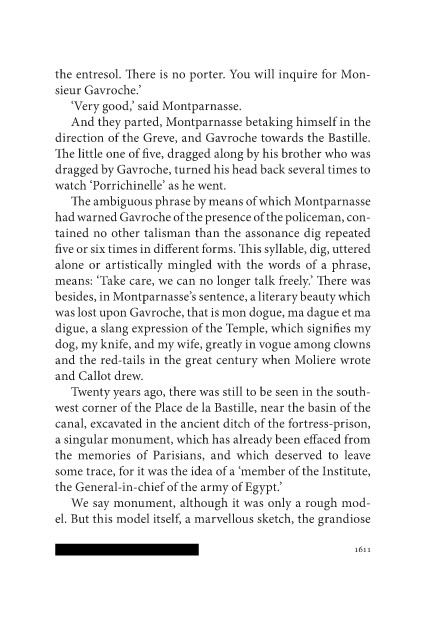Page 1611 - les-miserables
P. 1611
the entresol. There is no porter. You will inquire for Mon-
sieur Gavroche.’
‘Very good,’ said Montparnasse.
And they parted, Montparnasse betaking himself in the
direction of the Greve, and Gavroche towards the Bastille.
The little one of five, dragged along by his brother who was
dragged by Gavroche, turned his head back several times to
watch ‘Porrichinelle’ as he went.
The ambiguous phrase by means of which Montparnasse
had warned Gavroche of the presence of the policeman, con-
tained no other talisman than the assonance dig repeated
five or six times in different forms. This syllable, dig, uttered
alone or artistically mingled with the words of a phrase,
means: ‘Take care, we can no longer talk freely.’ There was
besides, in Montparnasse’s sentence, a literary beauty which
was lost upon Gavroche, that is mon dogue, ma dague et ma
digue, a slang expression of the Temple, which signifies my
dog, my knife, and my wife, greatly in vogue among clowns
and the red-tails in the great century when Moliere wrote
and Callot drew.
Twenty years ago, there was still to be seen in the south-
west corner of the Place de la Bastille, near the basin of the
canal, excavated in the ancient ditch of the fortress-prison,
a singular monument, which has already been effaced from
the memories of Parisians, and which deserved to leave
some trace, for it was the idea of a ‘member of the Institute,
the General-in-chief of the army of Egypt.’
We say monument, although it was only a rough mod-
el. But this model itself, a marvellous sketch, the grandiose
1611

